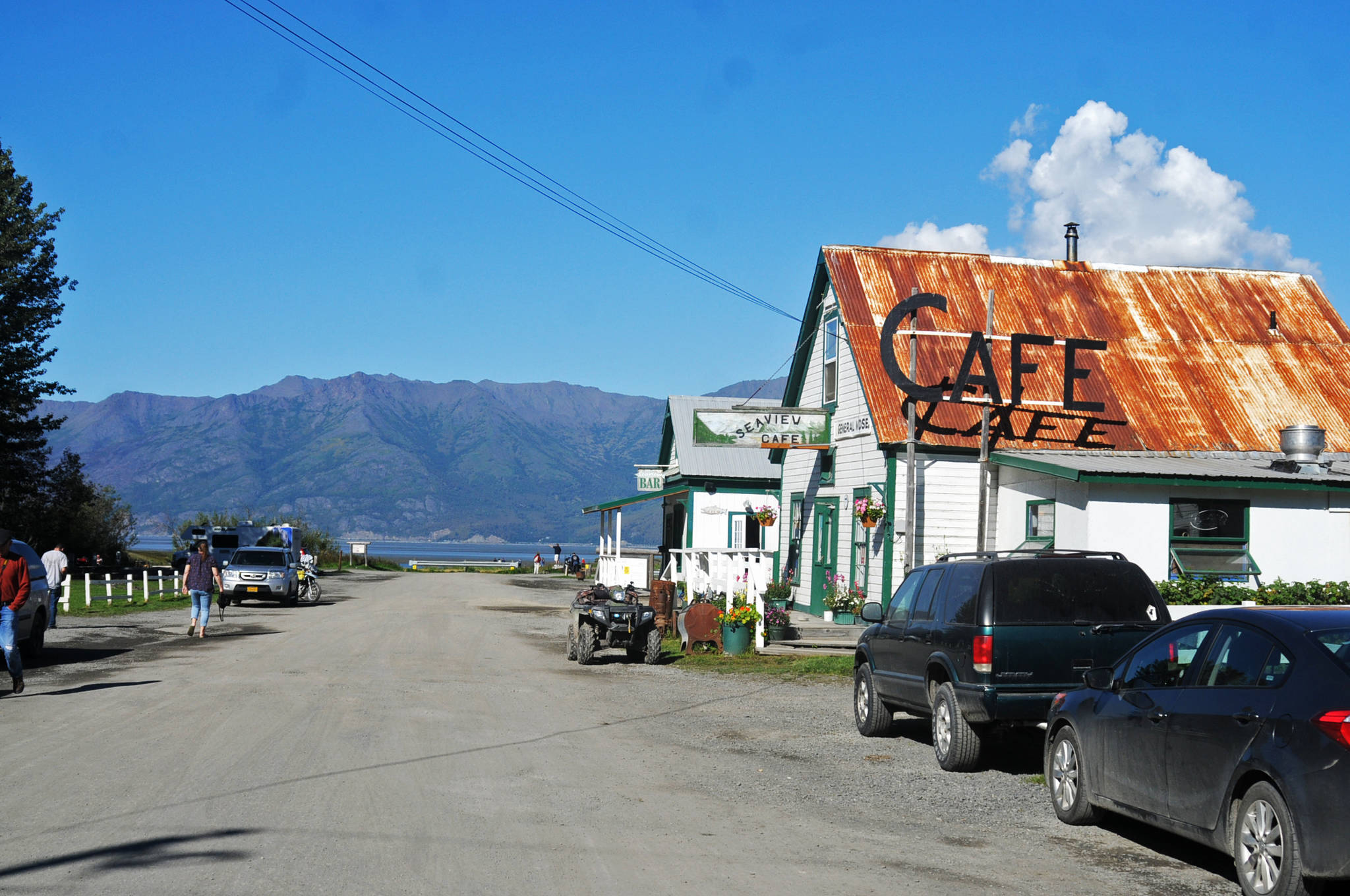The residents of the small village of Hope are trying to keep their community well-maintained and safe with what resources they have available.
Hope, an unincorporated community of about 180 year-round residents on the northeastern edge of the Kenai Peninsula, has long been a sleepy town in winter that booms with tourists over the summer. Visitors from Outside and within Alaska flock to the packed-dirt Main Street to enjoy the historic Sea View Café and the Resurrection Creek Flats as well as heading out to hike and bike the trails along Turnagain Arm. The Sea View hosts concerts every weekend throughout the summer that attract visitors, featuring some high-profile bands such as High Lonesome Sound.
But as an unincorporated community, Hope doesn’t have the tax base to provide law enforcement, infrastructure, fire or emergency services. Hope Emergency Services, a volunteer organization that provides fire and emergency medical services, struggles to keep volunteers and to maintain equipment. Even coordinating the service takes a lot of work — the formerly separate fire and emergency services recently merged to save costs, a project that took six months to finalize, said Scott Sherritt, president of the Hope Emergency Services Board.
Hope stands to benefit from the recent formation of the East Peninsula Highway Service Area, which the Kenai Peninsula Borough Assembly authorized at its May 16 meeting. Though the service area doesn’t have a budget, infrastructure or a plan yet, it could provide a more consistent structure for emergency medical response to accidents along the approximately 118 miles of highway on the eastern peninsula and relief for the small volunteer departments that have been handling it until now. Sherritt said Hope’s volunteer service has long struggled to maintain personnel, in part due to the town’s limited population.
“This might help in the long run with training, also getting more people involved, also getting more vehicles and things like that,” he said. “Right now, we basically cover from Hope and Sunrise out to the Y. Years ago, we used to go out on the highway, but we didn’t have transport, and we used to have to wait for Girdwood and Cooper Landing. That’s a problem because it takes them out of their area.”
Sherritt said he’s been involved with the emergency services since the widespread spruce bark beetle infestation of the 1990s, when the massive number of dead trees on the eastern Kenai Peninsula hiked up the fire danger dramatically. The small department doesn’t do structural fires — strictly wild and urban interface fires, essentially preventing wildfires from verging into town. Like the emergency medical services organization, the fire department has struggled to maintain volunteers over the years, he said.
Added to that is the large increase in tourism Hope has seen in the last decade or so. The town wants to stay welcoming to tourists, but residents have been concerned about people camping on the Resurrection Creek flats at the end of the town’s historic Main Street with campfires. Most of the danger is in the early part of the season before green-up starts, which typically occurs in early June, but people have been concerned, Sherritt said.
“And you get horrendous winds out there (on the flats),” he said. “And we’re at the confluence of the Turnagain Arm, and that’s one of the reasons that so many military planes practice here … that it’s such a weird wind area. It’s kind of an issue with the community. You have two sides of the story. Hope likes to be, has alwys been a very welcoming community.”
The flats are a major bird area as well, with migrating sandhill cranes, among other birds. People should be able to go out and enjoy the flats but be careful not to disturb the birds, Sherritt said.
Hope residents purchased land for a public restroom at the end of Main Street for the visitors and pay the costs for it through Hope, Inc., the nonprofit that serves as the legal entity for the community. Hope, Inc. also manages the community’s cemetery, the historic Hope Social Hall and has managed the Hope Library under lease from the Kenai Peninsula Borough since the 1980s. The assembly approved an ordinance to transfer ownership of the library building, known as the Old Hope School, to Hope, Inc. for $1 at its May 2 meeting.
Hope, Inc. already managed the library’s maintenance for the borough, putting about $200,000 over the years through grants and donations, said Hope, Inc. President Jim Skogstad.
“The borough hasn’t spent a dime on it since we took it over, so it just made sense for us to put it in our name so we didn’t have to deal with any of the lease issues with the borough,” he said. “There’s restrictive clauses in there. … There’s a guarantee that it will remain as a public facility and the assembly agreed.”
Hope, Inc. has worked on some of the issues with the tourist influx in Hope, including working with private landowners on the flats to help control the camping and fires there and restricting cars from driving out on the flats, Skogstad said. However, there are limits to what Hope can do as an unincorporated area, including law enforcement.
For serious issues, the Alaska State Troopers can respond there, but for enforcing issues such as parking, the community has no authority to police without forming a law enforcement service area through the borough or incorporating to provide police service.
Skogstad the residents are still trying to figure out mechanisms to solve some of the challenges.
“We’re just trying to keep the town, not let it turn into the party town of the Turnagain Arm,” Skogstad said.
Reach Elizabeth Earl at elizabeth.earl@peninsulaclarion.com.

